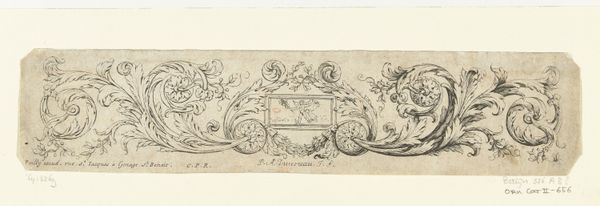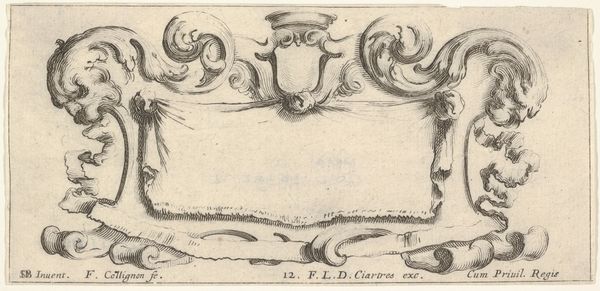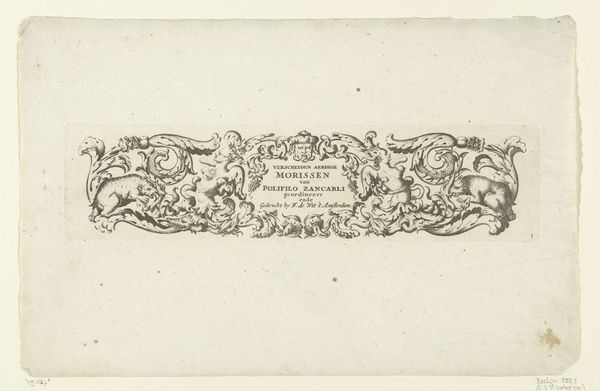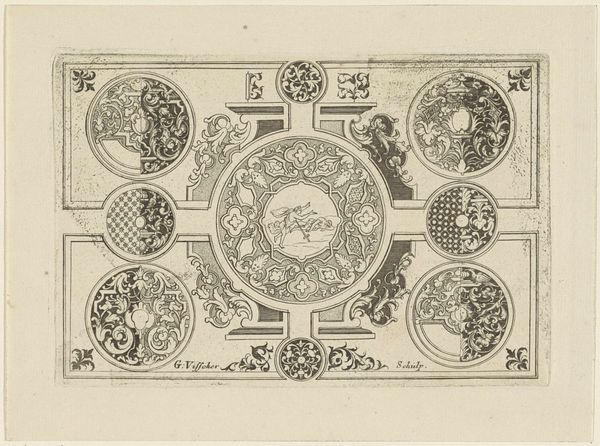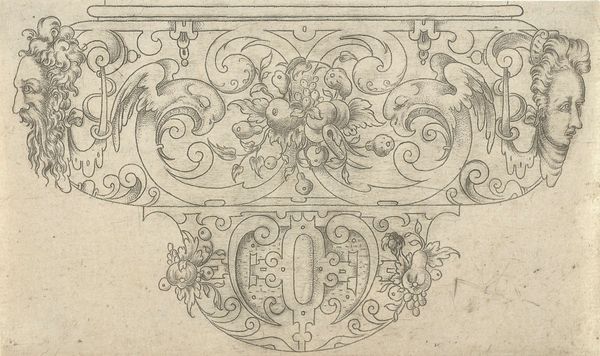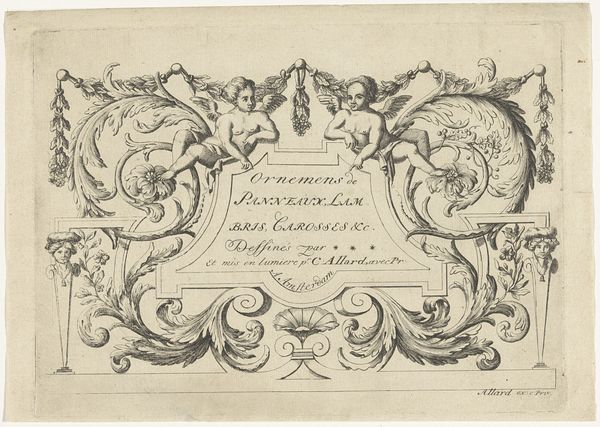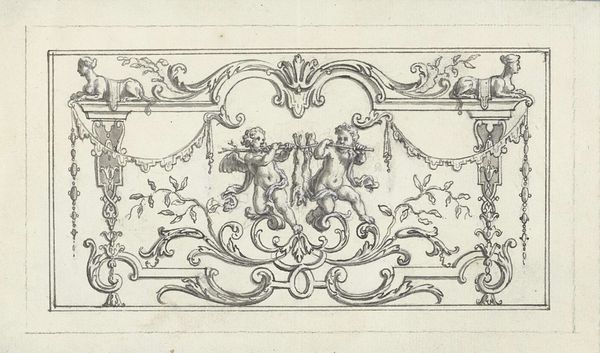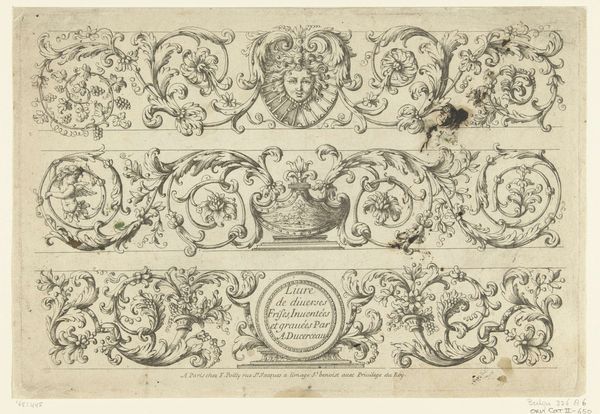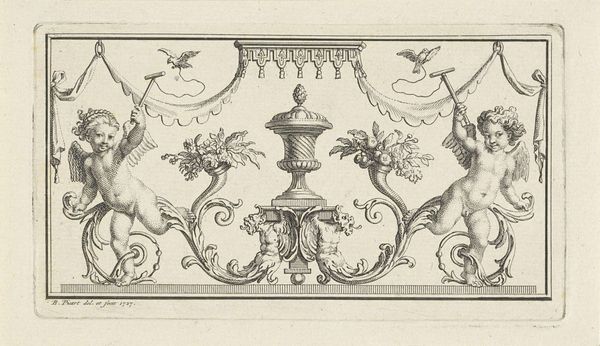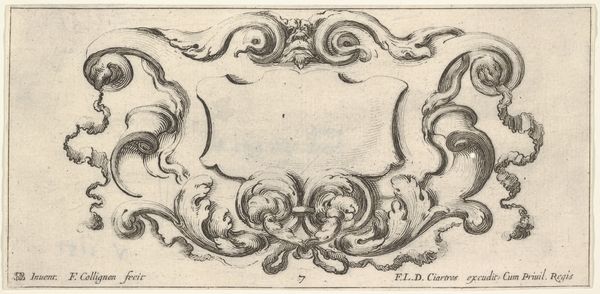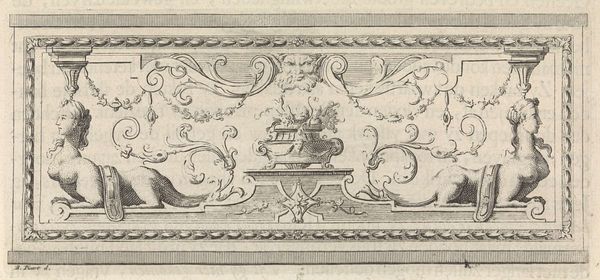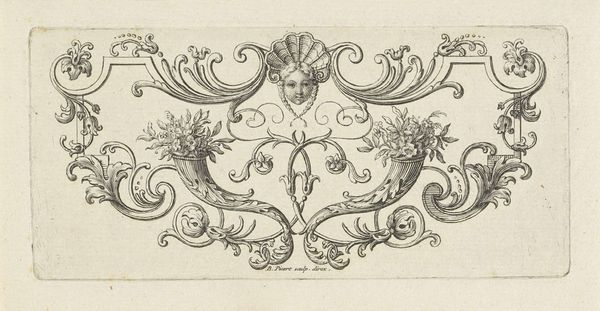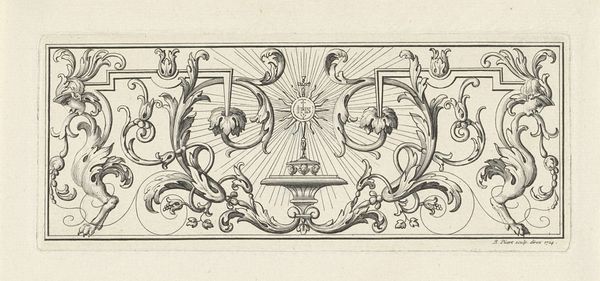
drawing, print, intaglio, paper, ink, engraving
#
drawing
# print
#
intaglio
#
mannerism
#
paper
#
11_renaissance
#
ink
#
engraving
Dimensions: height 46 mm, width 124 mm
Copyright: Rijks Museum: Open Domain
This intricate, unsigned cartouche is rendered with fine lines, likely an engraving, presenting a title block for ‘Gallia Narbonensis’. The linear structure and detailed ornamentation immediately catch the eye. Note the symmetrical arrangement: volutes flank the central nameplate, and a grotesque mascaron sits above, all contributing to a balanced yet somewhat unsettling visual experience. Structurally, the image is divided into clear horizontal registers, creating a hierarchy of information. The upper and lower sections are adorned with stylized scrolls and geometric patterns, typical of decorative cartography. Consider how the interplay of straight lines and curves creates a dynamic tension, a formal device that can be seen as a reflection of the cultural tensions inherent in mapping—the desire to impose order on a complex world. The mascaron, a motif often used to ward off evil, here suggests a deeper ambivalence, perhaps about the act of territorial claiming itself. The rigid structure of the cartouche acts as a container for names and places, but also as a signifier of power, fixing geographical entities within its formal embrace.
Comments
No comments
Be the first to comment and join the conversation on the ultimate creative platform.
